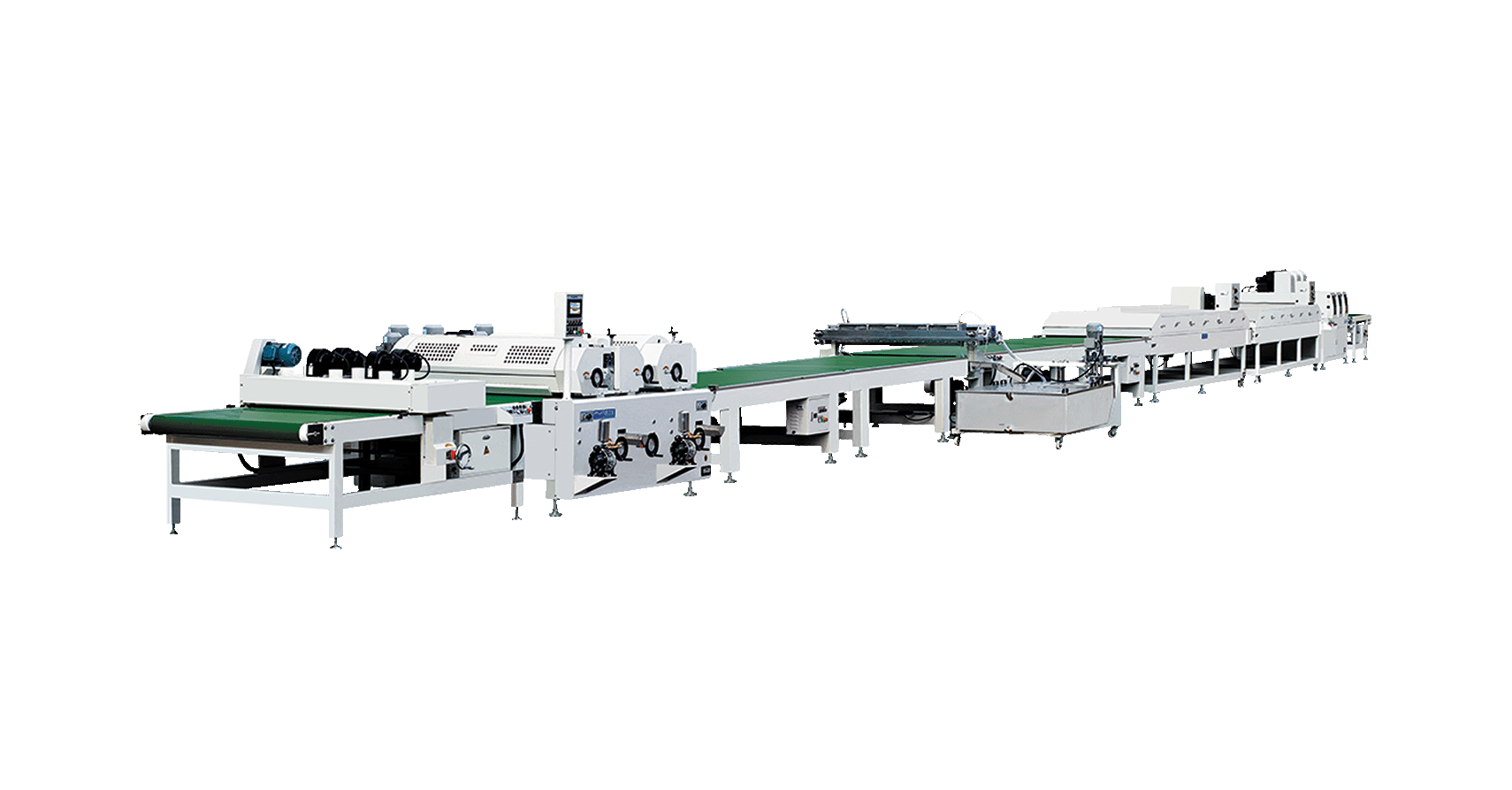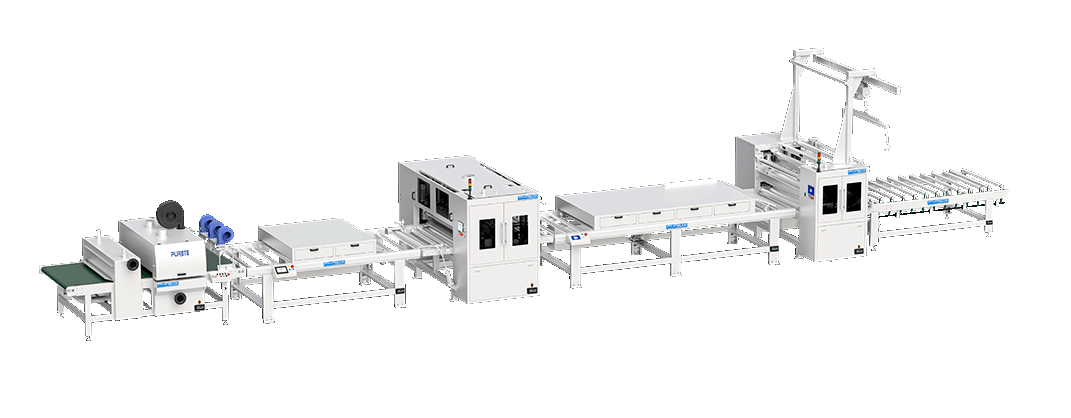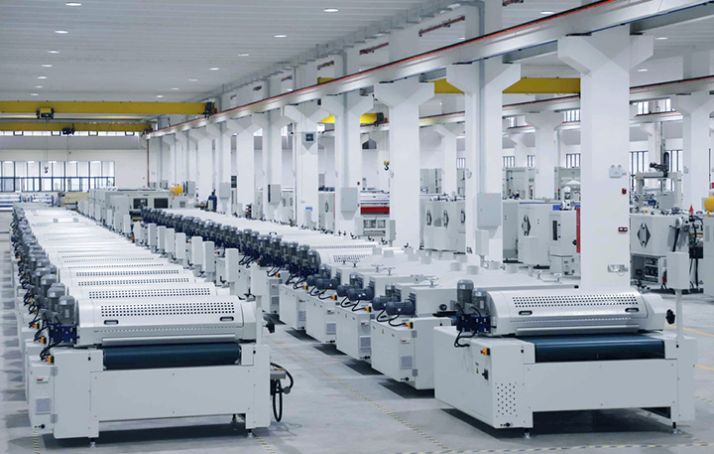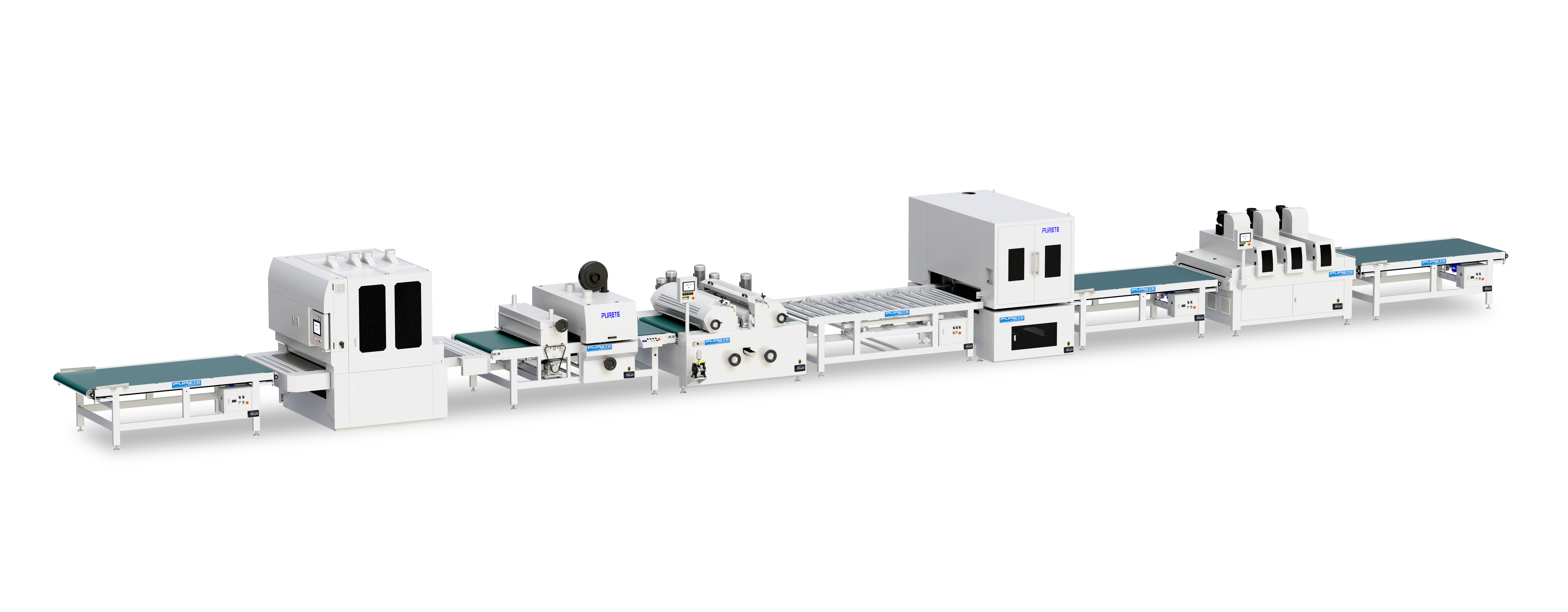Inert Coating Production Line vs Traditional Roll Coating: Cost, Quality, Efficiency
 September 22, 2025
September 22, 2025 Hits:312second
Hits:312secondIn the competitive world of industrial surface finishing, the right coating technology can determine whether a manufacturer thrives or struggles. From wood panels and furniture boards to flooring and decorative laminates, surface coating directly impacts product appearance, durability, and production efficiency.
For decades, many manufacturers relied on traditional roll coating lines. While cost-effective in their time, these systems face significant limitations in today's market, where customers demand flawless quality, faster production cycles, and sustainable practices.
Enter the inert coating production line—an advanced technology that integrates UV inert curing into a streamlined workflow. This innovation not only resolves the drawbacks of roll coating but also reduces cost, waste, and labor requirements while enhancing finish quality and durability.
Roll Coating Lines: What's the Traditional Workflow and Its Limits
Roll coating is one of the oldest coating methods used in wood finishing, panel coating, and industrial production lines. The process involves applying liquid coatings onto substrates using a series of rollers. While simple and proven, it comes with inherent challenges:
Oxygen inhibition – Traditional curing in open air often leaves surfaces under-cured, reducing gloss and chemical resistance.
Limited precision – Coating thickness can vary, leading to uneven surfaces and visible defects.
Slower drying and curing times – This increases production cycle length and requires additional handling.
Yellowing over time – Particularly when exposed to UV light, coated surfaces lose visual appeal.
Large equipment footprint – Multiple dispersed machines consume valuable factory space.
Although roll coating remains viable for low-cost, low-demand applications, it struggles to meet the high standards of modern furniture, flooring, and decorative industries.
Benefits of Inert Coating Lines
The inert coating production line introduces a major leap in coating technology by combining precision roll application with UV inert curing inside an oxygen-free environment. This hybrid approach delivers several clear advantages:
Defect-free curing – Eliminates oxygen inhibition, ensuring coatings fully polymerize.
Superior gloss and finish – Surfaces appear smoother, glossier, and more consistent.
Reduced VOC emissions – A cleaner, more environmentally friendly process.
Compact, integrated design – Saves space compared to dispersed roll coating setups.
Flexibility – Suitable for a wide range of substrates, including MDF, plywood, decorative laminates, and furniture panels.
By addressing the inherent weaknesses of traditional roll coating, inert systems allow manufacturers to deliver higher-value products with fewer defects and less waste.
Cost Comparison: Paint Consumption, Energy, and Maintenance
One of the biggest concerns for manufacturers is the total cost of ownership. Comparing traditional roll coating with inert coating systems highlights clear savings:
Paint consumption – Inert systems optimize application, reducing coating waste by up to 20–30%.
Energy efficiency – UV inert curing requires less energy compared to thermal drying used in conventional lines.
Maintenance costs – Integrated inert lines feature fewer moving parts, meaning less downtime and reduced maintenance expenses.
Labor costs – With fewer manual handling steps, operators can manage more output with less effort.
While the initial investment in inert technology may be higher, the long-term ROI from reduced consumables, energy savings, and lower rework rates far outweighs traditional systems.
Quality Outcome: Uniform Finish, Lower Yellowing, Better Durability
Surface quality is a key differentiator in today's marketplace. Traditional roll coating often leads to visible defects, uneven application, and premature yellowing, especially in products exposed to sunlight or chemical cleaning.
Inert coating lines solve these issues by:
Producing uniform finishes with consistent film thickness.
Significantly reducing yellowing and discoloration over time.
Enhancing scratch resistance and durability thanks to complete polymerization.
Delivering high gloss or matte finishes with stable visual appeal.
This improved performance translates to happier customers, fewer warranty claims, and longer-lasting surfaces—all of which improve brand reputation.
Efficiency Benefits: Reduced Handling, Faster Throughput, Less Waste
Efficiency is where inert coating lines truly shine. Traditional roll coating requires multiple stages, extended curing times, and repeated handling, slowing down the overall process.
By contrast, inert systems offer:
Continuous one-pass processing – From loading to final curing.
Higher throughput – Faster cycle times without compromising quality.
Reduced handling – Less risk of scratches, contamination, or rework.
Lower waste levels – Optimized coating and curing minimize rejects.
This streamlined workflow allows manufacturers to produce more in less time, directly boosting profitability.
Why PURETE One-Line Systems Deliver Boosted ROI
As a global leader in coating technology, PURETE has set the benchmark for integrated inert coating production lines. Unlike generic roll coaters, PURETE's systems are engineered for efficiency, precision, and cleanliness.
Key strengths of PURETE's inert coating lines include:
Compact design that saves valuable floor space.
Advanced UV inert curing technology delivering unmatched surface quality.
Energy-efficient operation reducing long-term running costs.
Customizable configurations to match different materials and production requirements.
Proven ROI through lower paint consumption, faster throughput, and superior durability of finished products.
For manufacturers aiming to upgrade from traditional roll coating to inert technology, PURETE's one-line systems provide a reliable, future-proof solution that balances cost, quality, and efficiency.
Conclusion
The comparison between traditional roll coating lines and inert coating production lines is clear. While roll coating has served the industry for decades, it struggles to meet the modern demands of high-quality finishes, energy efficiency, and streamlined workflows.
By contrast, inert coating systems deliver:
Lower overall costs thanks to reduced paint, energy, and maintenance expenses.
Superior finish quality with less yellowing and improved durability.
Higher efficiency through simplified handling, faster throughput, and less waste.
For manufacturers seeking to maximize ROI and stay competitive, adopting PURETE's integrated inert coating lines is a strategic move. With proven expertise and advanced technology, PURETE helps industries transition from outdated methods to cleaner, faster, and more profitable production systems.

















